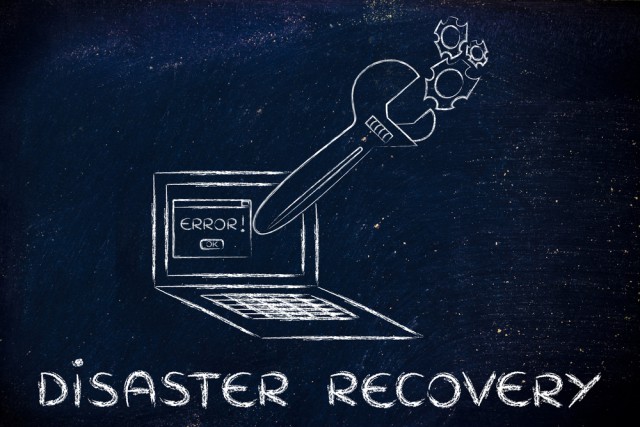
Disaster Recovery Planning: A successful framework for strategy and execution
The rise in cyber incidents is set to continue on its meteoric trajectory over the next decade. Ransomware attacks on a business, consumer, or a device are anticipated to take place every two seconds by 2031 -- a worrying escalation from every 11 seconds in 2021. And by 2025, damages are projected to reach a staggering $15 trillion annually, up from $3 trillion in 2015, according to Cybersecurity Ventures.
At the same time, users demand better performance and user experience year-after-year, and the subsequently increased threat landscape poses real challenges in connectivity and data security. 'Insider threat' also poses a considerable risk, with 80 percent of breaches involving privileged credentials misuse or abuse and malicious insider activity from recent employees.

In machines we trust? The critical role of digital identity management
The introduction of the cloud has brought a lot of change to the world. A big one for enterprises is that it’s no longer a necessity to guard data on-premises. Most organizations today rely on a hybrid approach to hosting their applications, with an average of three or more different clouds driving various applications in their infrastructures.
While the cloud has delivered plenty of benefits to these businesses and transformed the way they think about data and security, they’re not all properly managing and securing applications across the enterprise.

Transform the upstream oil and gas industry with the power of advanced technology
The digital capabilities of organizations have evolved at a rapid rate over the last fifteen years. Businesses must keep up with popular trends and technology to remain competitive. The COVID-19 pandemic accelerated digital transformation and technology in general, altering the landscapes across nearly all organizations. Industries like healthcare and hospitality were changed completely and will be forever. That said, other industries that were indirectly impacted by the pandemic were also pushed over the tipping point and sent into technological evolution.
One industry where digital strategies have lagged is upstream oil and gas. Many companies have been hesitant to implement the latest wave of digital transformation and have fallen behind in comparison to other industries. Decision-makers now face a digital deluge as solutions and platforms continuously flood into the landscape. Just a few of the technologies include:

Why robust API security is crucial in eCommerce
In today’s modern eCommerce world, consumers have more digital-first and convenient ways of shopping than ever before. Among the critical technologies that have made this possible are Application Programming Interfaces (APIs) which give retailers the ability to transform their systems and processes in quick and efficient ways. Retailers need to reach as many users as possible and to facilitate this they need a well-constructed interface between the eCommerce site and the consumer.
Amazon arguably kicked off the API explosion with Jeff Bezos’ instructions in 2002: "All teams should expose their data and functionality through service interfaces and communicate with each other through these interfaces which should be designed from the ground up to be externalisable."

Breaking through the noise: What have we got wrong about digital transformation?
Digital Transformation -- it’s a term used and adored by many, and a concept that private and public sectors are striving for. But what is it really?
With the term cropping up in various contexts, it has become increasingly hard to pin down what digital transformation is into one common consensus. Rather, it has developed into a go-to term synonymous with a revolving door of new tech trends. Moving on little from the wave of CIOs of the mid-2010s who moved things to the cloud and coined it as 'digital transformation'.

Retail technology trends for 2022
One noticeable change brought on by the pandemic was the need for retailers to transform digitally. Retailers big and small are now adopting and implementing new digital retail technologies to achieve operational efficiencies, meet customer needs, overcome labor shortages and more.
However, it can be challenging to understand what types of retail technology trends are taking the industry by storm. Continue reading to learn more about the top retail technology trends and their impact on the industry in the remaining months of 2022.

Why code signing is the talk of the dark web
Code signing certificates are an essential part of our software world. Every software update is signed with a unique machine identity, combining a time stamp with an encryption algorithm in the form of a x.509 certificate issued by a trusted certificate authority. This allows other machines to know they are authentic and can be trusted.
Developers sign their code with a private key, and an end-user uses the public key from that developer to validate that the code hasn’t changed since the developer signed it. If someone has altered the code, the signature will provide an untrusted alert, in the same way a website with an untrusted or expired certificate does with transport layer security (TLS) machine identities. Without this system of identity, it would be impossible to deliver software. Without this you couldn’t use Windows, Mac, or iPhone let alone fly on a modern Airbus or Boeing aircraft. And it’s quickly becoming the same way in the cloud-native world of Kubernetes.

Bring Your Own Device can empower your employees, and increase productivity too
Companies have been more trusting of their employees since the pandemic forced everyone to work at home. In much the same way that employers realized their staff could be trusted to get on with the job despite being unsupervised, they are also realizing that they can trust them to use their phone for work without opening Candy Crush.
Technology is encouraging employee autonomy and the advantages of convenience, efficiency and productivity are being recognized by forward-thinking businesses.

To tackle range anxiety and fully embrace EVs, we need more effective software
We are living in the midst of the climate crisis. The emergence of electric vehicles as an alternative to their gas-guzzling counterparts has become a vital element in fighting climate change -- and a major part of a cleaner, safer future for all.
With that said, the transition to EVs isn’t easy or simple. Any unnecessary complications, or fears like 'range anxiety' quickly puts off potential drivers, who may feel daunted by the mindset change that EVs necessitate. Accessible, dynamic and smart software here is essential: drivers, whether for their jobs or just everyday usage, need to know where chargers are, which ones are superfast, and if they are in use or even working at all. Fleet managers, and delivery and courier companies, need to know their whole fleet’s charging schedule is optimized so the vehicles that need it are fully charged.

Top tips for success in a developer career
Being a software developer is more than just typing away at a computer. To be successful, you need to be able to keep up with the rapidly evolving software industry and the significant developments occurring across the sector.
Developers looking to propel their careers forward need to take a holistic approach to their careers, incorporating soft skills to expand their skill set and take the next step. Mastering this, however, is a challenge. It requires a continuous learning mindset. Make sure you’re equipping yourself to develop experiences and acquire new skills. This will enhance your career and make it easier for you to find fulfillment in your role as a software developer.

How Banking-as-a-Service is shaking up the fintech ecosystem
Today, consumers are faced with more choice than ever when it comes to their financial affairs. From contemporary offerings like Buy Now, Pay Later (BNPL) and embedded finance platforms, to more traditional products like credit and debit cards, institutions and retailers alike are being called upon to deliver more seamless, quick and flexible solutions to their customers.
Crucially, businesses launching new financial products often require the complex underlying infrastructure of a bank to bring their offerings to market -- this is, of course, with the obvious exception of certain BNPL products like Klarna, which can operate without full regulation. Likewise, incumbent banks themselves, who already have the full regulatory permissions required to operate, may need to adopt core banking platforms to modernize their legacy systems in order to develop truly competitive offerings to meet the needs of their customers. This is where Banking-as-a-Service (BaaS) and Platform-as-a-Service come in to disrupt the fintech landscape.

GPT-3? No, it's not a new Star Wars character but an evolving foundational AI model with huge potential
At the mention of GPT-3, you’d be forgiven for thinking that Disney had invented a new droid character in the latest offering of the Star Wars franchise.
But instead of playing a leading role in Obi-Wan Kenobi, which of course is streaming now on Disney+, GPT-3 is instead set to make its mark on the world in its own way.

Safeguarding your business in the digital age
Data is often referred to as 'the new oil' that is now playing a major part in shaping economies the world over. In today’s digital world, around 85 percent of organizations see data as one of their most valuable assets.
Back in 2010, IDC calculated that the world had created around 64.2 zettabytes (ZB) of digital information and Seed Scientific estimates that by 2025, the amount of data generated each day is expected to reach 463 exabytes globally, with a total of 175 zettabytes!

Process discovery is the secret ingredient to better DevOps
The most overlooked step in any modernization process is process discovery. Corners get cut to conserve time and resources which, often limits the business impact of modernization efforts ultimately resulting in limited productivity improvements.
Process discovery is the key to fine-tuning modernization projects, including testing and deployment, to drive the most value from both the application itself and the work to modernize it. It enables visibility across application workflows -- including exceptions -- allowing organizations to prioritize modernizing the tasks that are most frequent and time-consuming. This extends into DevOps testing.

How CIOs can mold apps into a winning team by emulating Pep Guardiola and Jürgen Klopp
In the modern enterprise, CIOs play a similar role to a football manager: bringing together multiple puzzle pieces to create a squad that can achieve great things. If Ted Lasso taught us anything, it’s that to win the Premier League, managers can’t just focus on the individual flair of one or two key players -- they must build a team that supports one another and performs well as a single unit.
Just look at Pep Guardiola and Jürgen Klopp, who have been among the most successful coaches in recent years. Despite having the funds available, they resist the temptation to purchase a raft of new players every year, instead focusing on getting their existing squad performing together -- and CIOs should take the same approach with workplace technology.

